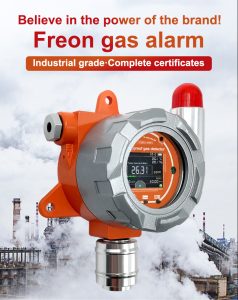Rapid urbanization and the challenges associated with it have driven the need for smarter cities. As cities grow, so does the impact of air pollution on the health and well-being of urban dwellers. With the increasing concern for public health and environmental sustainability, effective air quality management is critical. Gas sensors, with their ability to detect and monitor pollutants in real-time, play a crucial role in enabling smarter cities. In this article, we will explore the applications and benefits of gas sensors in air quality management, and how they contribute to building healthier and more sustainable urban environments.

Understanding Gas Sensors:
Gas sensors are electronic devices designed to detect and measure the concentration of specific gases in the atmosphere. They function by converting the presence of target gases into an electrical signal, which can be analyzed and interpreted. Gas sensors can detect a wide range of pollutants, including carbon monoxide (CO), nitrogen dioxide (NO2), ozone (O3), sulfur dioxide (SO2), volatile organic compounds (VOCs), and particulate matter (PM). By providing real-time data on pollutant levels, gas sensors enable informed decision-making and proactive measures to mitigate air pollution.
Establishing Air Quality Monitoring Networks:
To effectively manage air quality in cities, it is essential to establish comprehensive monitoring networks. Gas sensors play a vital role in these networks by providing accurate and timely data on pollutant concentrations. Fixed monitoring stations equipped with gas sensors are strategically placed throughout cities to capture variations in air quality across different areas. These sensors continuously measure pollutant levels and transmit the data to centralized databases for analysis. This information helps city authorities identify pollution sources, assess the effectiveness of control measures, and develop targeted strategies to improve air quality.
Mobile Monitoring Solutions:
In addition to fixed monitoring stations, mobile monitoring solutions that incorporate gas sensors offer significant advantages in air quality management. These solutions can be deployed on vehicles, drones, or even carried by individuals, providing real-time data on pollutant levels as they move through the city. Mobile monitoring offers several benefits, including the ability to identify pollution hotspots, capture spatial and temporal variations in air quality, and support dynamic decision-making. By leveraging gas sensors in mobile monitoring solutions, cities can obtain a more comprehensive understanding of air pollution patterns and take immediate actions to mitigate exposure risks.
Integration with IoT Platforms:
Modern cities are increasingly adopting Internet of Things (IoT) technologies to improve efficiency and enhance urban services. Gas sensors can be integrated into IoT platforms, enabling seamless data collection, transmission, and analysis. IoT connectivity allows gas sensors to transmit real-time data wirelessly to centralized databases, where it can be processed and accessed by various stakeholders. This integration enables city authorities, researchers, and the public to monitor air quality remotely, make data-driven decisions, and develop targeted interventions. By leveraging the power of IoT, gas sensors contribute to the development of smarter, data-driven cities.
Citizen Engagement and Awareness:
Engaging citizens in air quality management is crucial for building sustainable and inclusive cities. Gas sensors offer opportunities for citizen science initiatives, empowering individuals to actively participate in data collection and monitoring efforts. Portable or wearable gas sensors allow citizens to monitor the air quality in their surroundings and contribute valuable data to monitoring networks. This engagement fosters a sense of ownership and responsibility among citizens, raises awareness about air pollution issues, and promotes individual actions to reduce exposure to pollutants. Citizen engagement, combined with reliable data from gas sensors, creates a collaborative approach to air quality management in smarter cities.

Early Warning Systems and Decision Support:
Gas sensors play a critical role in the development of early warning systems for air pollution events. By continuously monitoring pollutant levels, gas sensors can detect sudden increases in concentrations, signaling potential health risks to the population. Early warning systems equipped with gas sensors provide stakeholders with timely information to take preventive measures, such as issuing health advisories or implementing emergency response plans. Furthermore, gas sensor data can be integrated with decision support systems, enabling city authorities to make informed policy decisions and allocate resources effectively for air quality improvement.
Mitigation and Long-Term Planning:
Gas sensors not only enable the monitoring and management of air qualif
 : +86 155 8830 2704
: +86 155 8830 2704 : jxdziot@gmail.com
: jxdziot@gmail.com
